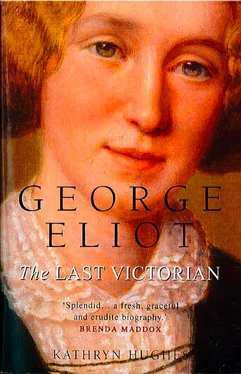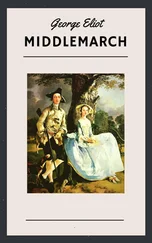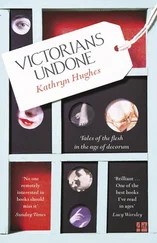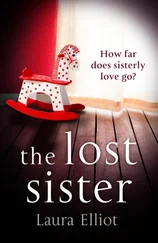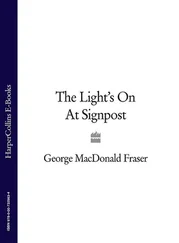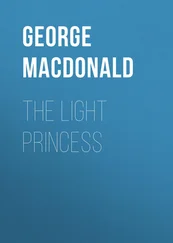GEORGE
ELIOT
The LAST VICTORIAN
KATHRYN HUGHES

For my parentsAnne and John Hughesagain
Cover
Title Page
Dedication
CHAPTER 1: ‘Dear Old Griff’ Early Years 1819–28
CHAPTER 2: ‘On Being Called a Saint’ An Evangelical Girlhood 1828–40
CHAPTER 3: ‘The Holy War’ Coventry 1840–1
CHAPTER 4: ‘I Fall Not In Love With Everyone’ The Rosehill Years 1841–9
CHAPTER 5: ‘The Land of Duty and Affection’ Coventry, Geneva and London 1849–51
CHAPTER 6: ‘The Most Important Means of Enlightenment’ Life at The Westminster Review 1851–2
CHAPTER 7: ‘A Man of Heart and Conscience’ Meeting Mr Lewes 1852–4
CHAPTER 8: ‘I Don’t Think She Is Mad’ Exile 1854–6
CHAPTER 9: ‘The Breath of Cows and the Scent of Hay’ Scenes of Clerical Life and Adam Bede 1856–9
CHAPTER 10: ‘A Companion Picture of Provincial Life’ The Mill on the Floss 1859–60
CHAPTER 11: ‘Pure, Natural Human Relations’ Silas Marner and Romola 1860–3
CHAPTER 12: ‘The Bent of My Mind Is Conservative’ Felix Holt and The Spanish Gypsy 1864–8
CHAPTER 13: ‘Wise, Witty and Tender Sayings’ Middlemarch 1869–72
CHAPTER 14: ‘Full of the World’ Daniel Deronda 1873–6
CHAPTER 15: ‘A Deep Sense of Change Within’ Death, Love, Death 1876–80
Epilogue
Select Bibliography
Index
Acknowledgements
About the Author
Notes
Praise
Copyright
About the Publisher
CHAPTER 1
‘Dear Old Griff’
Early Years 1819–28
IN THE EARLY hours of 22 November 1819 a baby girl was born in a small stone farmhouse, tucked away in the woodiest part of Warwickshire, about four miles from Nuneaton. It was not an important event. Mary Anne was the fifth child and third daughter of Robert Evans, and the terse note Evans made in his diary of her arrival suggests that he had other things to think about that day. 1 As land agent to the Newdigate family of Arbury Hall, the forty-six-year-old Evans was in charge of 7000 acres of mixed arable and dairy farmland, a coal-mine, a canal and, his particular love, miles of ancient deciduous forest, the remnants of Shakespeare’s Arden. A new baby, a female too, was not something for which a man like Robert Evans had time to stop.
Six months earlier another little girl, equally obscure in her own way, had been born in a corner of Kensington Palace. Princess Alexandrina Victoria was also the child of a middle-aged man, the fifty-two-year-old Prince Edward of Kent, himself the fourth son of Mad King George III. None of George’s surviving twelve children had so far managed to produce a viable heir to succeed the Prince Regent, who was about to take over as king in his own right. It had been made brutally clear to the four elderly remaining bachelors, Edward among them, that the patriotic moment had come to give up their mistresses, acquire legal wives and produce a crop of lusty boys. But despite three sketchy, resentful marriages, the desired heir had yet to appear. Still, at this point it was too soon to give up hope completely. Princess Alexandrina Victoria, born on 24 May 1819, was promisingly robust and her mother, while past thirty, was young enough to try again for a son. If anyone bothered to think ahead for the little girl, the most they might imagine was that she would one day become the elder sister of a great king.
Officially the futures of these two little girls, Mary Anne and Alexandrina Victoria, were not promising. As for every other female child born that year, the worlds of commerce, industry and the professions were closed to them. As adults they would not be able to speak in the House of Commons, or vote for someone to do so on their behalf. They would not be eligible to take a degree at one of the ancient universities, become a lawyer, or manage the economic processes which were turning Britain into the most powerful nation on earth. Instead, their duties would be assumed to lie exclusively at home, whether palace or farmhouse, as companions and carers of husbands, children and ageing parents.
Yet that, as we know, is not what happened. Neither girl lived the life that the circumstances of her birth had seemed to decree. Instead, each emerged from obscurity to define the tone and temper of the age. Princess Alexandrina Victoria, pushed further up the line of succession by her father’s early death, even gave her name to it. ‘Victorian’ became the brand name for a confident, expansive hegemony which was extended absent-mindedly beyond her own lifetime. ‘Victorian’ was the sound of unassailable depth, stretch and solidity. It meant money in the bank and ships steaming the earth, factories that clattered all night and buildings that stretched for the sky. Its shape was the odd little figure of Victoria herself, sweet and girlish in the early years, fat and biddyish at the end. Wherever ‘Victorian’ energy and bustle made themselves felt, you could be sure to find that distinctive image, stamped into coins and erected in stone, woven into tablecloths and framed in cheap wood. In its ordinary femininity the figure of Victoria offered the moral counterpoise to all that striving and getting. The solid husband, puffy bosom and string of children represented the kind of good woman for whom Britain was busy getting rich.
George Eliot’s image, by contrast, was rarely seen by anyone. Indeed, it was whispered that she was so hideous that, Medusalike, you only had to look upon her to be turned to stone. And her name, during its early years of fame, suggested the very opposite of Victorianism. Her avowed agnosticism, sexual freedom, commercial success and childlessness were troubling reminders of everything that had been repressed from the public version of life under the great little Queen. By 1860 Victoria and Eliot had come to stand for the twin poles of female behaviour, respectability and disgrace. One gave her name to virtuous repression, a rigid channelling of desire into the safe haven of marriage and family. The other, made wickeder by male disguise, became a symbol of the ‘Fallen Woman’, banished to the edges of society or, in Eliot’s actual case, to a series of dreary suburban exiles.
That was the bluster. In real life – that messy matter which refuses to run along official lines – the Queen and Eliot shared more than distracted, greying fathers. Their emotional inheritance was uncannily similar and pressed their lives into matching moulds. Both had mothers who were intrusive yet remote, a tension which left them edgy for affection until the end of their days. Victoria slept in the Duchess of Kent’s room right up to her coronation, while Eliot spent her first thirty years looking for comfortable middle-aged women whom she could call ‘Mother’. When it came to men, both clung with the hunger of children rather than the secure attachment of grown women. Prince Albert and George Henry Lewes not only negotiated the public world for their partners, but lavished them with the intense and symbiotic affection usually associated with maternally minded wives. And when both men died before them, their widows fell into an extended stupor which recalled the despair of an abandoned baby.
What roused them in the end were intense connections with new and unsuitable men. The Queen found John Brown, then the Munshi, both servants, one black. Eliot, meanwhile, married John Cross, a banker twenty years younger and with nothing more than a gentleman’s education. Menopausal randiness was sniggeringly invoked as the reason for these ludicrous liaisons. Victoria was called ‘Mrs Brown’ behind her back. And when John Cross had to be fished out of Venice’s Grand Canal during his honeymoon, the whisper went round the London clubs that he had preferred to drown rather than make love to the hideous old George Eliot.
Читать дальше
